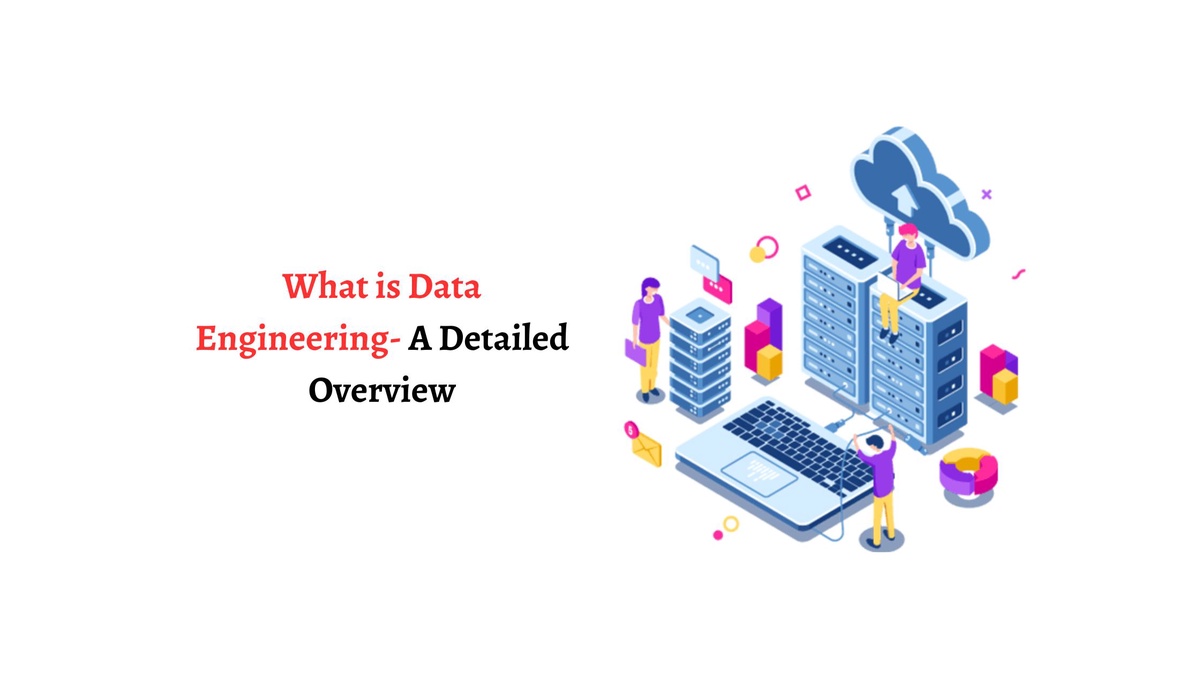To manage large amounts of data and guarantee its dependability, accessibility, and maximum efficiency, data engineering encompasses a technological and strategic methodology. This complex activity is devoted to building resilient infrastructures, coordinating data pipelines, and implementing scalable solutions that expedite data analysis and support well-informed decision-making. Data engineering services are seamlessly integrated into the data ecosystem and involve carefully curating, transforming, and managing data. They serve as the foundation for complete insights and power the essential operations of today's data-centric enterprises.
Understanding Data Engineering
Data engineering encompasses the processes, methodologies, and technologies employed to design, build, maintain, and optimize data pipelines, infrastructure, and architectures. Data engineering, often known as information engineering, is a software technique for designing information systems. To be clear, data engineering entails gathering, processing, and managing data from diverse systems. This procedure guarantees that data is useful and accessible. Above all, data engineering stresses data collecting and analysis applications. It is no surprise that investigating the above-mentioned inquiries necessitates sophisticated solutions.
As a result, data engineering incorporates intricate approaches for obtaining and validating data, ranging from data integration tools to artificial intelligence.
Core Components of Data Engineering
Data Engineering encompasses several core components that collectively form the backbone of data infrastructure. These components ensure efficient, reliable, and scalable data processing. Here are the fundamental core components:
Data Ingestion: Involves collecting raw data from various sources, such as databases, applications, IoT devices, or external APIs, and transferring it into a storage system for further processing.
Data Storage: Encompasses the storage of structured, semi-structured, or unstructured data in repositories such as data lakes, data warehouses, or distributed storage systems.
Data Processing: Includes the cleaning, transforming, and aggregating of data to ensure its quality, consistency, and relevance for analysis. This often involves batch processing, real-time streaming, or both.
Data Transformation and Integration: Involves manipulating and integrating data from disparate sources to create unified datasets ready for analysis or consumption by downstream applications.
Data Governance and Security: Focuses on ensuring data compliance, privacy, and security measures are in place, aligning with regulatory standards and safeguarding sensitive information.
Tools and Technologies in Data Engineering: Apache Spark, Apache Hadoop, and Talend facilitate the extraction, transformation, and loading of data into storage systems.
Data Warehousing Solutions: Amazon Redshift, Google BigQuery, and Snowflake provide scalable and high-performance storage for structured data.
Streaming Platforms: Like Apache Kafka and Amazon, Kinesis enables real-time processing and analysis of streaming data.
Data Pipeline Orchestration Tools: Such as Apache Airflow and Luigi aid in managing and automating complex data workflows.
Conclusion
Data engineering solutions are the vital link between raw data and actionable insights in the complex web of the data ecosystem. Its essential function in building robust, scalable, and efficient data infrastructure is a pillar for businesses looking to leverage data's natural ability to drive innovation, create a competitive advantage, and direct strategic decision-making. The importance of data engineering solutions is growing as the exponential increase in data quantities continues. These solutions enable and empower data-driven transformations critical for organizational growth and resilience in today's dynamic environment.


No comments yet